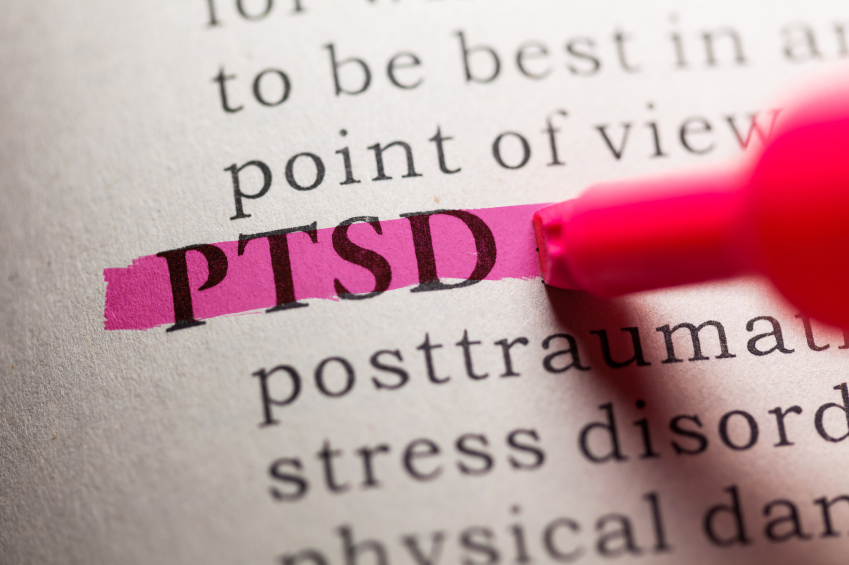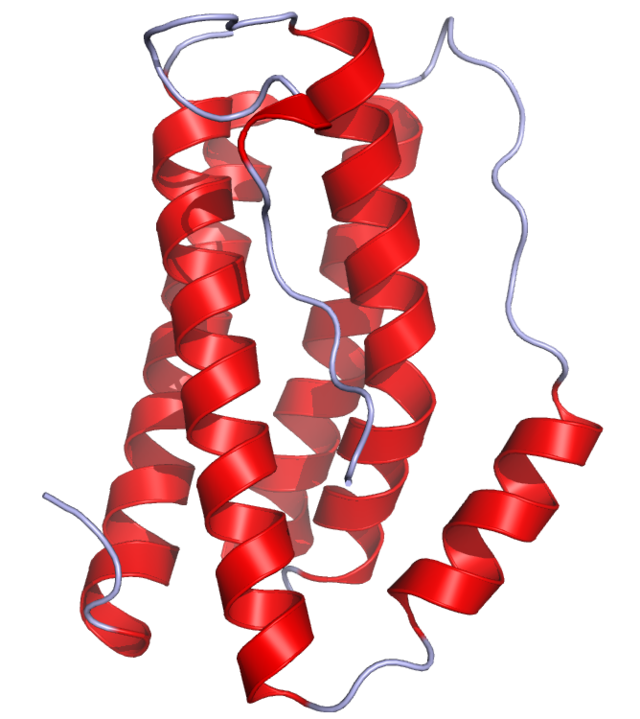A Re-Kindling Process Produces Late-Onset PTSD
Not everyone who experiences trauma develops post-traumatic stress disorder (PTSD) immediately. Researchers are discovering that some people go on to develop symptoms like flashbacks or intrusive thoughts, anxiety, and withdrawal, sometimes after long periods of being asymptomatic. Two studies provide hints about the mechanism of this late-onset (or delayed-type) PTSD.
In an article by Danny Horesh et al. published in the journal Psychiatry Research in 2013, a reported 16.5% of 675 Israeli veterans of the 1982 conflict with Lebanon developed late-onset PTSD after a completely non-symptomatic period. The number of deployments soldiers were sent on and the number of terror incidents they experienced within Israel after the war were correlates of the late-onset PTSD, while continuous post-war employment was a protective factor reducing late-onset PTSD.
In a study of 260 older adults (above age 60) who survived the destruction around Galveston Bay, Texas by Hurricane Ike in 2008, Robert H. Pietrzak et al. reported in the Journal of Psychiatry Research in 2013 that 5.3% developed late-onset PTSD. In this case as well, a greater number of subsequent traumatic and stressful life events (and in particular financial difficulties) was associated with late onset of PTSD. The majority of participants in Pietrzak’s study (78.7 %) had no to few PTSD symptoms, while 16.0% had chronic PTSD symptoms from the outset persisting through assessments at three months and 15 months.
Editor’s Note: These two studies reveal that upon prospective follow-up, a small but substantial group of patients (5–16%) develop a late-onset type of PTSD. Acute onset PTSD has been closely linked to new trauma in adulthood, especially following the occurrence of previous (childhood) traumas. The late-occurring variety of PTSD seems to appear after an incubation period, and appears to be closely associated with the occurrence of new traumatic events during the well interval. These new events may result in a kindling-like effect, where repetition of subthreshold stimuli come to evoke a full-blown episode. PTSD appearing after repeated traumatic experiences may operate in a similar fashion to seizures that gradually emerge following repeated electrical stimulation of the amygdala (i.e. amygdala kindling). Read more
Inflammation Predicts Depression Persistence
Links between inflammation and depression continue to be identified in new research. Researcher N. Vogelzangs et al. reported in a 2014 article in Neuropharmacology that inflammatory and metabolic dysregulation in antidepressant users predicted an outcome of depression two years later. Elevated levels of the marker of inflammation Il-6, low HDL (or “good”) cholesterol, high triglycerides, and high blood sugar were associated with poor response to medication and chronicity of depression. Of 315 people treated with antidepressants (average age 43), 138 were in remission at 2 years, while 177 (56.2%) were still depressed. People with four or more types of inflammatory or metabolic dysregulations had a 90% chance of still being depressed at 2 years.
Among inflammatory markers including CRP and TNF-alpha, IL-6 alone was associated with chronic depression. Il-6 can cross the blood-brain barrier. We have previously reported that researcher Scott Russo found that in rats in a depression-like state known as defeat stress (brought about by repeated defeat by a larger rodent), blocking Il-6 can prevent depressive behaviors such as social avoidance or loss of preference for sucrose.
Like inflammation, metabolic abnormalities also complicate depression. Lipid dysregulation and hyperglycemia are associated not only with depression persistence, but also with the new onset of depression in humans.
Vogelzangs et al. conclude that these data “ suggest that inflammatory and metabolic dysregulation worsens depression course owing to reduced [antidepressant] response and that alternative intervention treatments may be needed for depressed persons with inflammatory and metabolic dysregulation.”
It is noteworthy that a 2014 meta-analysis of the anti-inflammatory drug celecoxib (Celebrex) published by Farhad Faridhosseini et al. in Human Psychopharmacology, showed that the drug, often prescribed for arthritis, is effective for unipolar depression when added to patients’ regular treatment.
It remains to be ascertained whether celecoxib’s effects are seen in depression in general, or if they pertain only to the 30% of depressed patients who show inflammation at baseline. Typical markers of inflammation include Il-6, CRP, TNFa, and Il-1.
Statins, prescribed to lower cholesterol, also have anti-inflammatory effects, and are also effective in preventing depression.
Determining treatment approaches for those patients showing signs of inflammation or metabolic irregularities remains a high priority for study. The preliminary data noted here suggest that treating these dysregulations in those with depression may be useful.
Cynicism Linked to Dementia
A decades-long study called Cardiovascular Risk Factors, Aging and Dementia (CAIDE) observed older participants for signs of dementia, and collected data on participants’ levels of cynical distrust, for example, the belief that others will lie or cheat for personal gain and that it’s safer not to trust anyone.
A 2014 study by Elisa Neuvonen et al. in the journal Neurology reported that after adjusting for demographic and other factors, those participants with the highest levels of cynical distrust of others were at higher risk for dementia as they aged. This relationship was not explained by depressive symptoms. The authors suggest that a positive attitude may protect the brain.
The researchers acknowledge that it is possible the distrust may be a result of brain changes leading to dementia, rather than the cause of it.
Those with the highest levels of cynical distrust were also at higher risk for death, but this association disappeared when the researchers controlled for socioeconomic factors and health behaviors such as smoking.
The researchers hope to investigate whether having a cynical attitude early in life is more robustly linked to mortality. It would be exciting to determine whether a shift to a more positive attitude earlier in life could prevent dementia.
Editor’s Note: A high level of chronic anger is associated with shorter telomeres. Telomeres sit at the end of DNA strands and shorten with each cell replication. Shorter telomeres are linked to multiple medical and psychiatric disorders. It may be that cynical distrust shortens telomeres, and is thus associated with dementia.
Twin Study Helps Clarify Epigenetic Component to Bipolar Disorder
An epigenetic finding from a study of twins may shed light on why some people develop bipolar disorder and others don’t.
Epigenetics refers to changes in genes that do not affect the inherited sequence of DNA, but affect how easily the DNA is transcribed to produce proteins. Environmental events such as stress or exposure to chemicals can bring about epigenetic changes by adding or subtracting acetyl or methyl groups from strands of DNA or the histones around which it is wound. In this way twins’ DNA can differ—not in its sequence but in its physical structure and the ease with which it produces proteins.
At the 2014 meeting of the International Society for Bipolar Disorders, researcher J. Ayers Ringlera et al. presented their study of pairs of twins in which one twin had bipolar disorder and the other didn’t. The ill twins showed more methylation of SLC1A2, the gene for the excitatory amino acid transporter 2 (EAAT2), which clears the excitatory neurotransmitter glutamate from the synapse of neurons. Methylation of the gene suppresses the amount of transporter expressed, so less glutamate gets cleared.
Editor’s Note: Glutamate abnormalities play a role in bipolar disorder. This finding by Ringlera et al. may explain why the drug N-acetylcysteine (NAC) works in bipolar disorder—NAC increases the number of glial glutamate transporters and helps clear excess glutamate from the synapse.
Maternal Flu Infection Increases Fetus’ Risk of Bipolar Disorder with Psychotic Features
 A 2014 study by Sarah E. Canetta et al. in the American Journal of Psychiatry suggests that children whose mothers had influenza during pregnancy are at higher risk for bipolar disorder with psychotic features. The same researchers had previously found that maternal influenza during pregnancy increased a child’s risk of developing schizophrenia, suggesting that there is a link between maternal influenza and psychotic symptoms in the offspring.
A 2014 study by Sarah E. Canetta et al. in the American Journal of Psychiatry suggests that children whose mothers had influenza during pregnancy are at higher risk for bipolar disorder with psychotic features. The same researchers had previously found that maternal influenza during pregnancy increased a child’s risk of developing schizophrenia, suggesting that there is a link between maternal influenza and psychotic symptoms in the offspring.
In the current study, influenza infections were identified by measuring levels of flu antibodies in blood. In a previous study, participants were considered to have influenza if they had been diagnosed clinically. Possibly due to this difference, that study showed a link between maternal flu infections and bipolar disorder in general (not just psychotic cases).
High Impulsivity and Low Resilience Characterize Euthymic Patients with Bipolar Disorder
Resilience is the ability to cope with adversity. While its role in anxiety disorder, post-traumatic stress disorder (PTSD), and unipolar depression has been investigated, there have been few studies of resilience in bipolar disorder.
A recent study presented by B. Cha et al. at the 2014 meeting of the International Society for Bipolar Disorders found that even euthymic patients with bipolar disorder show low levels of resilience (as rated on the Connor-Davidson Resilience Scale). Patients with a history of prior bipolar episodes had greater impulsivity (measured on the Barratt Impulsion Scale) and lower resilience than participants in a control group. Impulsivity in bipolar disorder was associated with lower resilience. Higher Clinical Global Impressions (CGI) scores, greater number of prior depressive episodes, and more impulsiveness were associated with lower resilience scores.
Both high impulsiveness and low resilience may be trait-related phenomena even in patients who have recovered from bipolar disorder. Number of prior depressive episodes is also associated with more cognitive impairment on multiple tests of executive functioning, attention, learning, and memory. Therapy aimed at problem solving and coping skills might help build resilience.
Obesity Worsens Bipolar Disorder, Decreases Gray and White Matter in Brain
According to researcher David J. Bond at the 2014 meeting of the International Society for Bipolar Disorders, “Up to 75% of people with bipolar disorder (BD) are overweight or obese, and these patients suffer more severe psychiatric symptoms than normal-weight patients, including more frequent depressions, more suicide attempts, lower response rates to pharmacotherapy, and greater inter-episode cognitive impairment.” Obesity is a chronic inflammatory condition that damages body organs, and it appears as though the brain may be one of these. Adipose (fatty) tissue is an endocrine organ that produces substances that cause inflammation in blood vessels and that damage the heart.
Obesity is associated with decreased total brain volume, and in children, decreased gray matter volume. Obesity increases the risk of cognitive impairment, and decreases memory, attention, and executive functioning. Obesity increases the risk of Alzheimer’s disease, as well as multiple sclerosis, Parkinson’s, and depression.
In bipolar disorder, obesity decreases response to mood stabilizers and atypical antipsychotics. Bond found that in patients with a first episode of mania, body mass index (BMI) was inversely related to white matter volume and temporal lobe gray matter volume. Higher BMIs also led to neurochemical changes including increased hippocampal glutamate and reduced N-acetylaspartate. Bond also noted findings by Roger S. McIntyre that weight loss surgery in patients with bipolar disorder led to more positive treatment outcomes.
Editor’s Note: These findings speak to the importance of exercise and good diet, using medications with the least likelihood of weight gain, and treating obesity once it has developed. We have previously noted the weight loss effects of topiramate and zonisamide, and new data support the substantial weight loss with the combination of bupropion (150-300mg) and naltrexone (50mg).
The Importance of Folate in Bipolar Disorder
Researchers are exploring the therapeutic potential of nutraceuticals, or nutritional treatments. Folate, also known as folic acid or vitamin B9, is one of the most important nutritional elements for mental health.
The folate found in foods such as dark leafy greens must be broken down further in order to be used in the body. Folate first breaks down into dihydrofolate (DHF), which is turned into tetrahydrofolate (THF). At the 2014 meeting of the International Society for Bipolar Disorders, researcher J.H. Baek described a pathway by which THF is turned into a form called 5,10 MTHF, which is turned into a form called 5 MTHF. 5 MTHF is important for the function of the enzyme tryptophan hydroxylase and for clearing homocysteine, an amino acid that is cardio- and neuro-toxic.
L-methylfolate, the active ingredient in the medication Deplin, is an already-broken-down form of folate that the brain can use more readily than the folate from food. L-methylfolate is converted directly to 5 MTHF, so it is effective in 15% to 35% of the normal population who have a deficiency in the enzyme MTHF reductase, which converts THF to 5 MTHF. One genetic variant (a C to T allele variation 677) that results in one type of deficiency in MTHF reductase has a 42% incidence among Asians, 34% among Caucasians, and 8% among Africans, and these individuals would benefit from l-methylfolate.
Folate and Medications for Bipolar Disorder
Certain medications lead to deficits in folate, so patients should consider taking a nutritional supplement.
The anticonvulsant drug lamotrigine inhibits the conversion of folate to DHF and DHF to THF, so folate supplementation is a good idea for those patients taking lamotrigine.
The mood stabilizer valproate inhibits the conversion of toxic homocysteine to methionine and then to s-adenosyl methionine (SAMe), which acts like an internally-produced antidepressant. Thus valproate increases homocysteine, and patients on valproate should be routinely treated with folate and vitamin B12 to help lower homocysteine levels in the blood.
Folate supplements are recommended for depressed patients who are having an inadequate response to antidepressants, since the nutrient helps antidepressants work better even when patients do not have a folate deficiency. Researcher Andrew Stoll recommends folate (1mg for women and 2mg for men). However, those patients who have one of the genetic conditions that leads to a deficiency in MTHF reductase should take l-methylfolate instead of regular folate. Researcher Mauricio Fava and colleagues showed that l-methylfolate at doses of 15mg (but not 7.5mg) was more effective than placebo in patients with unipolar depression.
Oxytocin for Labor Induction Increases Risk of Bipolar Disorder
Over the past several decades, the practice of giving oxytocin (a hormone that facilitates bonding) to pregnant women to induce labor has become more common, but it comes with several risks to the child. These include increased risk of attention deficit hyperactivity disorder (ADHD), autism, and cognitive impairment. A new study by Freedman et al. presented at the 2014 meeting of the International Society for Bipolar Disorders suggests oxytocin may increase the risk of bipolar disorder as well.
In a sample of 19,000 people, there were 94 cases of bipolar disorder, and birth records revealed that an unexpectedly high number of these cases occurred in people whose mothers had received oxytocin to induce labor, regardless of the duration of the pregnancy. Cognition at ages 3 and 5 was impaired on one measure but not another in those children whose mothers received oxytocin. The researchers concluded that maternal oxytocin to induce labor is a significant risk factor for developing bipolar disorder later in life.
Editor’s Note: Oxytocin appears to take its place among other risk factors for bipolar disorder, which include: prematurity, maternal infection, influenza, the bacterial infection toxoplasmosis, higher insolation (a measure of how powerful radiation from the sun is in a given location), childhood adversity, inflammation (as measured by levels of C-reactive protein), heavy marijuana/THC use, and a family history positive for schizophrenia, schizoaffective disorder, or mood disorder, especially bipolar disorder and especially a bilineal history (illness in both parents).
Inflammation Occurs During Both Depression And Mania
There is increasing evidence of a link between mood disorders and inflammation in the body.
At the 2014 meeting of the International Society for Bipolar Disorders, Shang-Ying Tsai discussed increases in measures of inflammation that occur in bipolar disorder as a function of the clinical state of depression, mania, or euthymia (remission). He found that in both mania and depression, there were elevations in various markers of inflammation: STNF-R1, CRP, IL-Ira and SLR-2r. However, SLR-2r showed some particularly interesting results. In mania, elevation of SLR-2r, a marker of cell-mediated inflammation, was state-related, meaning it increased during an episode of mania and remained normal during euthymia. In depression, SLR-2r elevation was trait-related, or persistently elevated (even in remission).
Editor’s Note: This study adds to a growing list of studies that confirm the presence of inflammation in patients with bipolar disorder compared to normal controls, including a 2012 article by Tsai in the Journal of Affective Disorders. How elevations in inflammatory markers in a given individual should direct specific types of treatment intervention remains to be further clarified.










